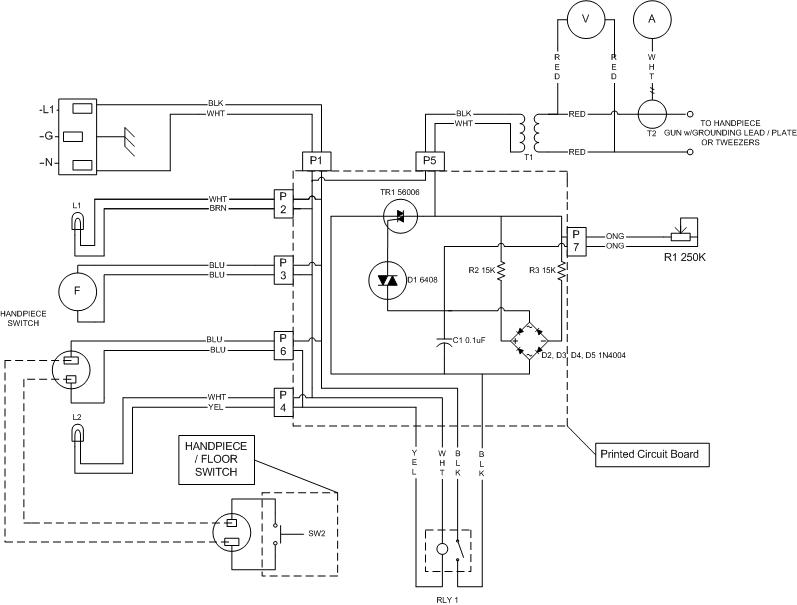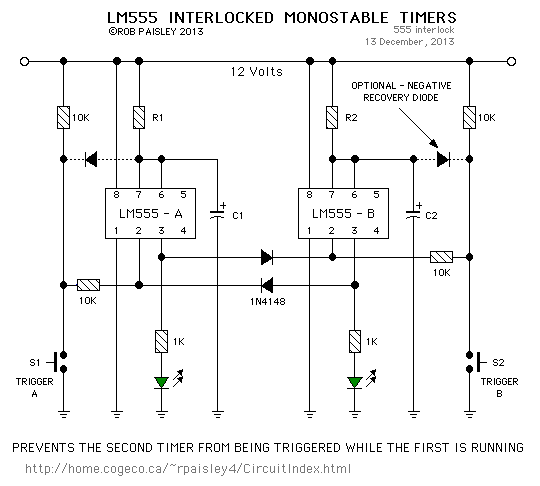
Game Show Indicator Lights (Whos First) circuit

The circuit activates a light corresponding to the first button pressed in a "Who's First" game. Three stages are illustrated, but the circuit can be expanded to accommodate any number of buttons and lamps.
The described circuit operates as a sequential button press detector, designed to illuminate a specific light based on the initial button activation in a game setting. The fundamental operation involves a combination of logic gates or a microcontroller that monitors multiple input buttons. Each button is connected to a distinct input pin, allowing the circuit to identify which button was pressed first.
In a typical configuration, the circuit may utilize a series of resistors and capacitors to debounce the button inputs, ensuring that only a single press is registered despite any mechanical bouncing that may occur. The logic circuitry can include an AND gate or a priority encoder that determines the first button pressed among the active inputs.
When the first button is pressed, the corresponding output pin is activated, which in turn energizes a relay or a transistor that controls the power to the light. The circuit can be designed to provide visual feedback through an LED indicator next to each button, illuminating only the active button to enhance user experience.
To extend the circuit for additional buttons and lamps, additional input pins can be added to the microcontroller or more logic gates can be included in the design. The scalability of the circuit ensures adaptability to various game formats, allowing for a larger number of participants while maintaining the same operational principles.
This circuit can be implemented on a printed circuit board (PCB) for durability and reliability, with careful consideration given to the layout to minimize interference and ensure consistent performance. Proper power supply regulation must also be accounted for to ensure that the circuit operates efficiently under varying load conditions.The circuit turns on a light corresponding to the first of several buttons pressed in a "Who`s First" game. Three stages are shown but the circuit can be extended to include any number of buttons and lamps.. 🔗 External reference
The described circuit operates as a sequential button press detector, designed to illuminate a specific light based on the initial button activation in a game setting. The fundamental operation involves a combination of logic gates or a microcontroller that monitors multiple input buttons. Each button is connected to a distinct input pin, allowing the circuit to identify which button was pressed first.
In a typical configuration, the circuit may utilize a series of resistors and capacitors to debounce the button inputs, ensuring that only a single press is registered despite any mechanical bouncing that may occur. The logic circuitry can include an AND gate or a priority encoder that determines the first button pressed among the active inputs.
When the first button is pressed, the corresponding output pin is activated, which in turn energizes a relay or a transistor that controls the power to the light. The circuit can be designed to provide visual feedback through an LED indicator next to each button, illuminating only the active button to enhance user experience.
To extend the circuit for additional buttons and lamps, additional input pins can be added to the microcontroller or more logic gates can be included in the design. The scalability of the circuit ensures adaptability to various game formats, allowing for a larger number of participants while maintaining the same operational principles.
This circuit can be implemented on a printed circuit board (PCB) for durability and reliability, with careful consideration given to the layout to minimize interference and ensure consistent performance. Proper power supply regulation must also be accounted for to ensure that the circuit operates efficiently under varying load conditions.The circuit turns on a light corresponding to the first of several buttons pressed in a "Who`s First" game. Three stages are shown but the circuit can be extended to include any number of buttons and lamps.. 🔗 External reference
Warning: include(partials/cookie-banner.php): Failed to open stream: Permission denied in /var/www/html/nextgr/view-circuit.php on line 713
Warning: include(): Failed opening 'partials/cookie-banner.php' for inclusion (include_path='.:/usr/share/php') in /var/www/html/nextgr/view-circuit.php on line 713





